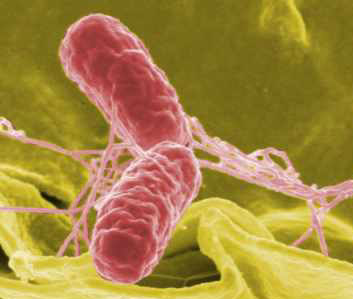How do antibiotics work?
Interview with
How do antibiotics, including those being made on my keyboard, actually  work? Here's Georgia Mills and Tom O'Hanlon with the gruesome ways in which antibiotics annihilate bacteria...
work? Here's Georgia Mills and Tom O'Hanlon with the gruesome ways in which antibiotics annihilate bacteria...
Georgia - There are five main ways that antibiotics kill bacteria, and they all involve exploiting differences between the structures of bacterial and human cells:
Tom - The first drug on the market was penicillin, discovered by Alexander Fleming back in 1929. This blocks the ability of the bacterium to build a tough outer cell wall; this causes it to swell up and burst...
Georgia - Second, below the cell wall is the cell membrane; this regulates concentrations of salts and water inside the cell. Antibiotics called Polymyxins break open the membrane, causing the bug to spill its guts and die.
Tom - Thirdly, bacteria use DNA, just like we do. And antibiotics such as ciprofloxacin, which is sometimes given to patients with urine, skin and chest infections, stop bacteria from copying or repairing their DNA, causing them to keel over.
Georgia - Fourth, you can stop a bacterium in its tracks by ensuring it can no longer make the vital nutrients it needs to live. For instance, sulphonamide antibiotics, like trimethoprim, prevent bugs from making the essential folic acid that they need to grow.
Tom - And finally, number 5, you can send in a drug that stops the assembly line in a bacterium's protein factory. Without proteins a cell can't survive. Drugs like tetracycline work this way and are commonly prescribed for people with acne or chest infections.
Georgia - So, in summary, to kill a bug you can burst it, pop it, neuter it, starve it or just break it...










Comments
Add a comment